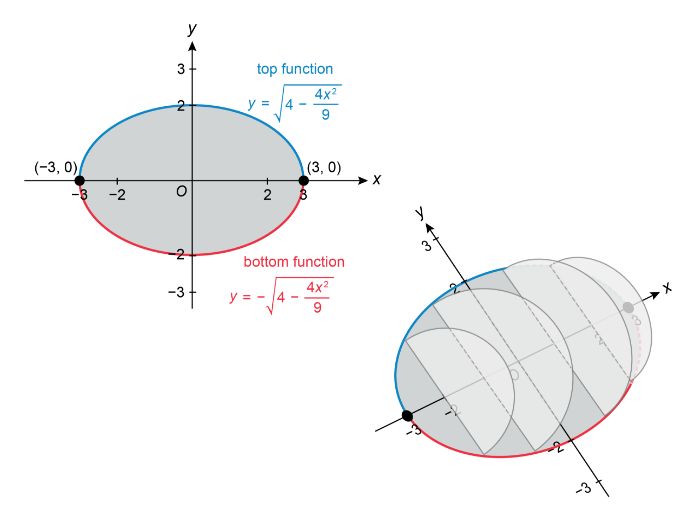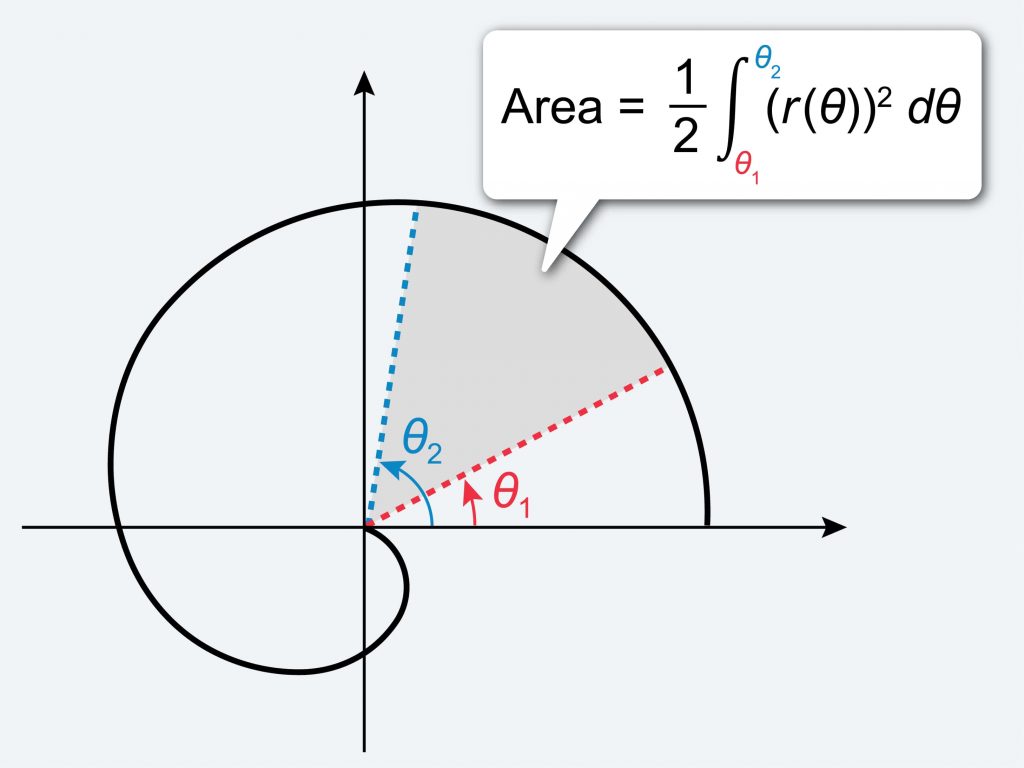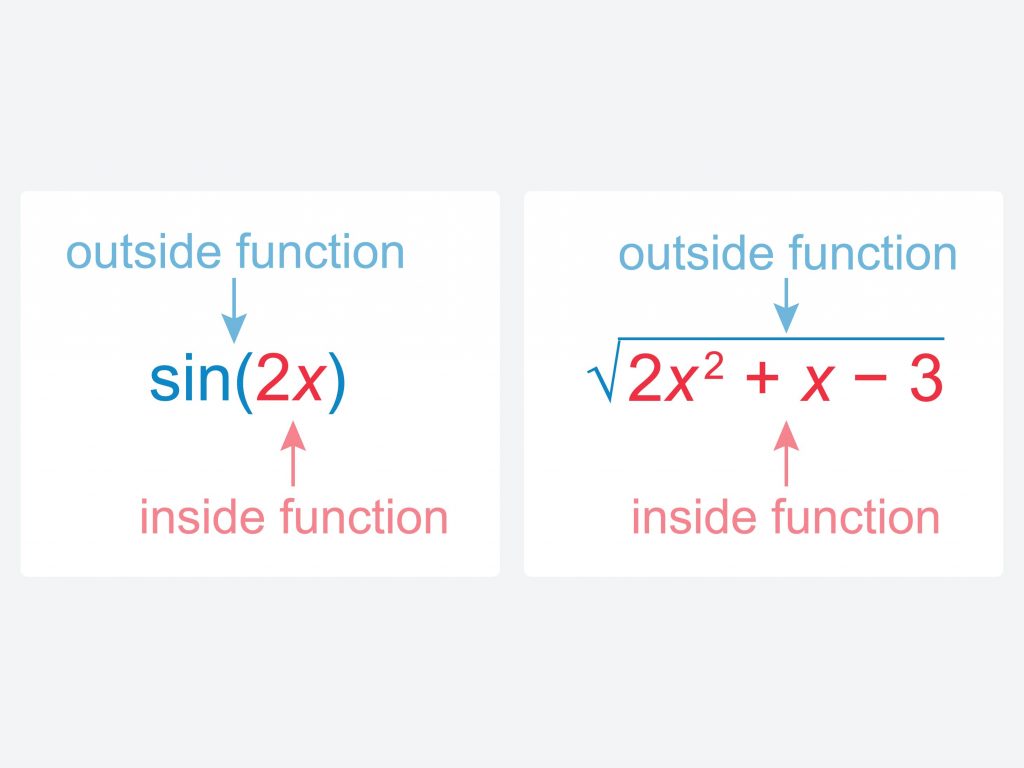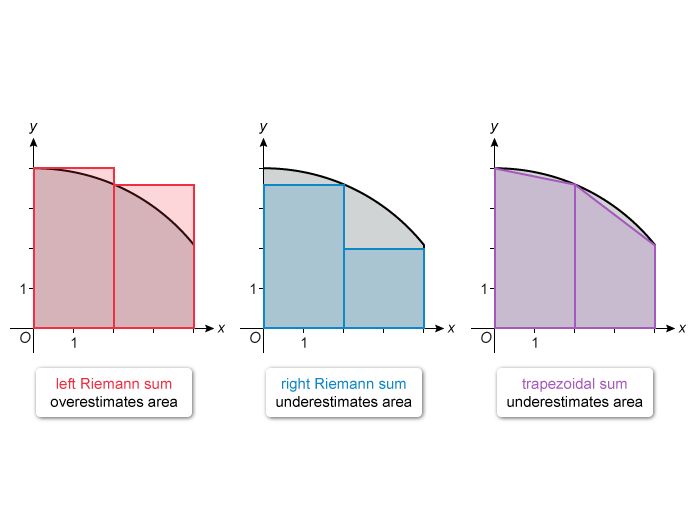AP® Calculus BC Study Guide
The AP® Calculus BC exam tends to have one of the highest pass rates of all AP exams, with about 72% of students achieving a score of 3 or above in 2021 — the seventh-highest rank of all the AP course offerings that year. That doesn’t mean the test is easy by any means; many students who take AP Calc BC tend to be high performers in math, and some even take AB before BC. If you are not one of those students, expect a tough challenge on the AP Calculus BC exam.
However, the test can become substantially more manageable with the right preparation and resources. Whether you’re aiming for a 3 to get some college credit or a 5 to stand out on college applications, UWorld has you covered! This AP Calc BC study guide gives you all the essential knowledge and preparation tips you need to crush the AP Calculus BC exam and attain your target score.
How To Study for the AP Calculus BC Exam
In this guide, we will help you with every stage of the process. From the moment you sign up for an AP Calculus BC course to exam day, you can take the following steps to prepare and improve your chances of getting your dream score.
How to prepare for an AP Calculus BC class
It’s spring, and you signed up to take an AP Calculus BC class next year. What now? Here are some things you can do before the school year starts to hit the ground running:
- Begin preparing for the course before summer.
- Review the AP Calculus BC course description.
- If possible, talk to your AP Calculus BC teacher about the expectations of the class. It might also be a good idea to speak with your guidance counselor about the difficulty of the AP Calc BC course.
- Brush up on algebra and pre-calculus concepts. Specifically, focus on functions and graphs, rational functions, limits, trigonometry, and the unit circle, factoring polynomials and completing the square, exponent and logarithm rules, and working with e and natural logarithms.
- Review formulas from geometry, like areas of circles, triangles, rectangles, and trapezoids. The volume and surface area of common 3D shapes like cubes, spheres, cylinders, and cones also show up occasionally, but the College Board® will often provide formulas in a question stem when applicable.
- Study AP Calculus BC Unit 1 concepts, and practice some UWorld questions on limits. Paul’s online math notes are an excellent, free resource for getting started with calculus and reviewing some pre-calculus topics.
- Identify the ideal learning strategy for you—how do you best absorb information? Reading? Reading while taking notes? Watching videos? Practicing problems? A combination of these? The summer is a great time to figure this out.
How to pass an AP Calculus BC class
A good two-thirds of the AP Calculus BC exam covers AB topics. If you’re looking to pass with a 3 or higher, it is essential that you know the basics really well. That means being very proficient with derivatives and integrals. Knowing how to differentiate and integrate various kinds of functions is the key to doing well in AP Calc BC.
Practice with UWorld questions in Topics 2.5–2.10 and 3.1–3.2 for derivatives, and Unit 6 for integrals. For a more advanced practice with these concepts, try Units 4 and 8 to apply the derivative and integral to context. Many of these concepts extend to Units 9 and 10, so they will help you with the BC-exclusive topics as well.
Here are some tips for passing the AP Calculus BC exam:
- Practice at least 30 minutes a day, every day.
- Try hard on your homework; that's where you build your skills. Besides, teachers are more likely to work with a student and help them improve if they put in consistent effort.
- Make flashcards for basic derivative and integral rules and use them regularly until you have them down.
- Get additional practice with UWorld MCQs. Focus on practicing derivatives and integrals, especially chain rule and u-substitution. Only when you have the basics down should you spend some time on the other units.
- Practice FRQs from the College Board’s past years’ exams. Analyze the scoring guidelines to understand what the College Board expects. If you have access to AP Classroom, it is also a good source of FRQs.
- Spend some time revisiting early units; the material from the beginning of the year might be somewhat rusty by now.
- Two weeks before the exam, increase your study time to one hour per day, reviewing two units per day.
- Ask the teacher for help and suggestions on how to improve; they may be able to help you identify specific growth areas.
How to do well on the AP Calculus BC exam
If you are confident in your ability to master the basics and want to shoot for a 4 or 5, you’ll want to spend more time working with the BC-exclusive topics. Units 6 (advanced integration techniques), 9, and 10 should be your focus. Practice FRQs frequently with the College Board’s previous years’ questions. They use a lot of similar question types in their FRQs, so pay attention to patterns.
For example, every test since 2012 (with the possible exception of 2020, for which the College Board has not released FRQs) has had one FRQ on Taylor/Maclaurin series. Practice those kinds of questions so you know how to handle them, because you will most likely see one on the test.
Here are some tips to improve your score from 3 to 4:
- Increase practice time to 45 minutes every day.
- Try hard on your homework.
- Everyday after school, review your notes from that day and the previous day’s class. Concepts often connect, so reviewing the previous class's concept can help you understand the next one.
- Around Spring Break, create a study plan for reviewing the course content (see below).
- Continue practicing MCQs with UWorld's AP Calculus BC question bank.
- Practice FRQs with AP Classroom and the ones the College Board provides. Keep an eye out for commonly asked questions and emphasize them.
- One month before the exam, increase studying time to 1.5 hours a day.
- Ask your teacher for help and suggestions on how to improve. They will help you and may even point out potential areas of improvement.
How to score a perfect 5 on the AP Calculus BC exam
So you want to score a 5? The most important thing to understand if you want a 5 is that you do not need to get every single point on the exam. You don’t even need to get 90%, which is the requirement for an A on an exam in the U.S. school system. You typically need just about two-thirds of the total possible points to achieve a 5. Mistakes are inevitable on the AP Calculus BC exam, but that’s OK.
According to The Indy Star, only 3 students worldwide, or 0.00002% of BC test-takers, got 100% of the points in 2017.
Don’t try to be perfect; maximize your points on the things you know well, and on anything else, try to eliminate answer choices and make an educated guess if it’s taking too long.
Knowing where to spend your study time is vital. Make sure you spend a lot of time on major concepts and know which concepts aren’t essential. For example, the derivative of inverse functions shows up consistently in one MCQ per test but never (as far as we know) in an FRQ. One MCQ is not worth a lot, so if you’re struggling to remember the formula, practice a few UWorld questions and make a flashcard with the formula to quiz yourself occasionally, but don’t spend too much time on it. Focusing on more critical concepts will make a bigger difference.
Here are some tips to help you earn that coveted 5:
- Be prepared to practice for 45 to 60 minutes every day.
- Try hard on your homework.
- Make flashcards of derivative and integral rules, common formulas, conditions and conclusions of theorems, etc.
- Around Spring Break, create a study plan for reviewing the course content (see below).
- Continue to use UWorld's AP Calculus BC question bank to practice MCQs.
- Keep practicing FRQs with AP Classroom and the ones the College Board provides. Keep an eye out for commonly asked questions and emphasize them.
- Identify and keep track of concepts you struggle with. Consider asking your teacher for extra clarification on those topics, and practice more problems in those areas.
- Ask the teacher for suggestions on how to improve and identify specific growth areas.
By Spring Break:
- Make a study plan for yourself (see below).
- Increase study time to 1.5 to 2 hours per day.
- Time yourself on FRQs based on the timing of each section of the exam. If you find yourself running out of time, identify the concepts and question types that take you the longest and focus on those. If you find yourself with extra time, get in the habit of checking your work. See our AP Calculus BC FRQ guide for more tips.
- Study the FRQ scoring guidelines on the College Board’s website to understand what they look for when grading. Pay particular attention to the 2021 guidelines as they detail exactly what the graders are looking for.
- Consider purchasing an exam prep book with more sample problems if you’ve completed UWorld’s AP Calculus BC question bank or all of the FRQs that the College Board provides.
What units are most difficult to learn or do I need to focus due to complexity?
According to the College Board, 2021 AP Calculus BC test-takers struggled with Unit 10 the most on both MCQs and FRQs. FRQ no. 6 is always a Taylor/Maclaurin series, and roughly a quarter of all students earned 0 points on that question in 2021. Taylor series is possibly the single most important topic to study in all of AP Calculus BC. Know their structure and how to find individual coefficients for each of their terms.
Another key unit to focus on is Unit 9. According to the College Board, BC students also struggled with this unit in both MCQs and FRQs in 2021. FRQ no. 2 on that exam dealt with particle motion with vectors, asking for things like speed and total distance traveled, which require knowledge of specific formulas. Make sure you study these and other formulas that are crucial for the ap calculus bc exam.
UWorld’s AP Calculus team also identifies polar coordinates in Unit 9 as a topic that gives BC students a lot of trouble. There are a lot of different types of questions that can come in a polar package, but spend a lot of time looking at polar areas. The limits of integration in polar area integral are values of the angle ϴ instead of x or y, so it is important to think about how area accumulates as the function rotates about the origin and not as the function travels along an axis.
Another concept to emphasize is the advanced integral techniques introduced in Unit 6 that are exclusive to AP Calculus BC. Integration by parts and partial fractions are crucial tools to add to your integration tool belt that will help with questions in later units as well.
How to self-study for the AP Calculus BC exam
If you plan to self-study for the AP Calculus BC exam without taking an AP class, you may have a few more obstacles and challenges ahead. However, it is definitely doable. The biggest challenge will be not having a teacher to introduce concepts and help you improve. So your first step is to identify what learning style works best for you:
- Do you learn best from practice problems?
Subscribe to a question bank. Our UWorld QBank is designed to help you learn from mistakes with the performance tracker feature. Take a few practice tests to track your progress and improve in those areas with the help of in-depth explanations. - Do you learn best from watching videos or visual presentations?
Khan Academy and Professor Leonard are a couple of good options to look for. You can use these sources to build your skills and concepts if you prefer an audio-visual media to learn. - Do you learn best from reading a textbook and taking notes?
A good free resource is Paul’s Online Math Notes. As a college professor’s notes on calculus, they aren’t specifically geared toward AP, but they can be a good starting point. You could also get a (single-variable) calculus textbook designed specifically for AP Calculus to help you with the AP coursework.
Most students learn from a combination of these approaches, so try different things and see what works best for you. Our recommendation would be to incorporate all of them. Here’s a general flow you can use to facilitate your learning process:
- Watch a video on a topic (Khan, Leonard, or other) and take notes.
- If you use Khan Academy, the videos are short enough that you can watch 2 or 3 at once. They are very well organized for proper pacing.
- If you use Professor Leonard, the videos are lengthy, so segment them into multiple viewing sessions. He stitches together multiple lectures into one video, so maybe watch until it cuts to the next lecture (his clothes will be different).
- Rewatch parts of or the full video if the topic still isn’t clear, or watch a similar video from another source. Sometimes, hearing or seeing a concept presented in multiple ways can help clear up confusion.
- Read a text explanation of the topic (textbook, Paul’s, or other) and add it to your notes.
- Work practice problems on the topic (UWorld, Khan, textbook, Paul’s, or other).
- If you use UWorld, read through the explanations, especially the questions you answer incorrectly. We also include hyperlinks to general explanations of concepts or alternate/more detailed solutions, so we encourage you to explore those as well.
- If you use Khan Academy for videos, take their progress checks and quizzes along the way to help cement the ideas. They are generally not AP-level questions but are great when first learning a topic.
- Review your notes at the end of your study session.
This flow may or may not work for you. Experiment and figure out what elements to incorporate into your study plan. See the next section for tips on creating a study plan that’s right for you.



AP Calculus BC Study Schedule and Exam Tips
Now it’s Spring Break (or later), and it’s time for the full-court press. No matter your time frame, we’ve got some tips for you to prepare for the AP Calculus BC exam.
In the best-case scenario, you should start buckling down around Spring Break. If you’ve been feeling stressed out by the rigor of an AP schedule, take a few days off or the whole week to relax. Not getting overwhelmed is very important for succeeding on the exam.
Now let’s get started! For the first month or so leading up to the exam, spend some time reviewing specific units. Start with Unit 1 and work your way through the course material. Review your notes, take some practice questions on each topic, and take a note of the areas that give you trouble. Questions in your textbook can be great for skill-building if you need a refresher on main concepts. Use UWorld MCQs and College Board FRQs for exam-level questions.
If you have access to AP Classroom, you may ask your teacher to provide you with some questions to practice. If you haven’t already, make some flashcards on key formulas and rules. Here’s a guideline for how much time to spend on each part of the course:
- Limits and Derivatives (Units 1–5): 1.5 weeks
- Integrals (Units 6–8): 1.5 weeks
- Parametric Functions, Vectors, and Polar Coordinates (Unit 9): 0.5 weeks
- Infinite Series (Unit 10): 1.5 weeks
That leaves about three weeks until your exam date. Here’s how you should spend that time:
- Take some time to review the concepts that gave you trouble during your unit review. Practice some more MCQs on those topics until you feel more confident.
- Now that you’ve targeted each individual unit, start mixing MCQs from multiple units. UWorld and AP Classroom both do this easily and intuitively.
- Use your flashcards daily to make sure you have the formulas down.
- Start timing your MCQs. The non-calculator section averages two minutes per question, and the calculator section averages three minutes per question. Some questions will take significantly more time than others, but try to get close to those averages. See our AP Calculus BC MCQ Guide for more information on improving performance.
- For FRQs, start taking entire sections from the past years’ FRQs and time yourself on those.
Another thing to consider in your study schedule is your other AP courses, if you have any. Make sure your schedule factors in time for all of them. For example, if you are taking four AP classes this school year, maybe devote half an hour to each on weeknights and a couple of hours each on Saturdays. Find a schedule that allows you to spend enough time on each subject, and make sure you factor in your other AP exam dates into your study schedule to prioritize accordingly. Similarly, set your schedule around extracurricular activities and sports. Planning ahead is the key here.
One last important bit of advice: structure breaks into your study schedule. It may seem like you don’t have time to take a day off, but you will learn and absorb information much better if you’re well rested. Take some time away from the material periodically to do something fun or completely unrelated. Either set a regular day in the week when you don’t study or learn to recognize when you’re feeling burned out and take the afternoon off.
If you only have one month until the exam, you still have a good amount of time to prepare. Like in the two-month schedule, you’ll want to start with a general review of the course topics, unit-by-unit, but at a much quicker pace. Use your textbook and class notes if you need refreshers on the concepts, but spend most of your time solving textbook practice problems or the UWorld QBank.
With UWorld, you can review the explanations of questions you miss and spend less time on the explanations of questions you understand. This approach of targeting the concepts you need most saves you time. Here’s a general breakdown of the timeframe:
- Limits and Derivatives (Units 1–5): 0.5 weeks
- Integrals (Units 6–8): 1 week (with extra emphasis on BC-exclusive topics)
- Parametric Functions, Vectors, and Polar Coordinates (Unit 9): 0.5 weeks
- Infinite Series (Unit 10): 1 week
For the remaining week, alternate between drilling through questions across all units in UWorld and practicing FRQs. Time yourself on the FRQs to make sure you can pace yourself well, and if you consistently have time leftover, spend that time reviewing your work.
With a two-week schedule, time is much more limited. For the first week, practice a few UWorld MCQs on each topic to find problem areas, read through the explanations, and review your class notes in those areas.
For the second week, spend most of your time practicing FRQs. FRQs hit many topics simultaneously, so they are a very time-efficient way to practice the course material. They also often require you to show your steps, so they are a great way to emphasize the entire process of answering calculus questions.
AP Calculus BC Review/Study Materials
Finally, here is a collection of materials you can use to facilitate your study. Most of these links are sprinkled throughout this guide, but we’ve listed them in one section for your convenience.
Question Banks and Practice Problems- UWorld: AP-level MCQs with in-depth explanations that help you learn from your mistakes.
- Paul’s Online Math Notes: More valuable for the text on the concepts and provides several practice problems on each topic.
- AP Classroom: Direct from the College Board and includes actual past AP test questions, but requires a teacher to push assignments to students.
- College Board FRQs: FRQs from past exams that provide excellent practice for those sections.
- Professor Leonard: A set of college lecture videos where he breaks down the concepts and emphasizes the core ideas behind calculus.
Good luck, and happy studying!

Related Topics
Having trouble keeping up with FRQs in AP Calculus BC? Check out our comprehensive hands-on guide to approaching each question type in the free-response section.
Want to score high in the AP Calculus MCQ section? Find out our instant guide to approaching the MCQ questions with ease.
